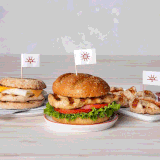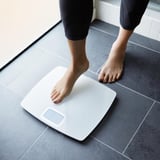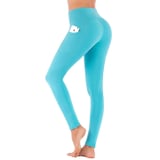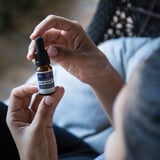Healthy lifestyle
A healthy lifestyle is one which helps to keep and improve people's health and well-being.Many governments and non-governmental organizations have made big efforts in healthy lifestyle and health promotion.
Mental Health
Mental health can be considered a very important factor of physical health for the effects it produces on bodily functions. This type of health concerns emotional and cognitive well-being or an absence of mental disorder.
Public health
Public health can be defined in a variety of ways. It can be presented as "the study of the physical, psychosocial and socio-cultural determinants of population health and actions to improve the health of the population.
Reproductive Health
For the UN, reproductive health is a right, like other human rights. This recent concept evokes the good transmission of the genetic heritage from one generation to the next.
Health
Health is a state of complete physical, mental and social well-being, and not merely the absence of disease or infirmity.
mardi 30 avril 2019
Not Into Drinking? Here Are the Best Bachelorette Destinations For Relaxation and Wellness

The purpose of a bachelorette party is to celebrate both your departure from singledom and the sacred bond of sisterhood. If, for you, that means dancing in a club all night and drinking cocktails from a suggestively shaped straw, then by all means, have at it! But not every bachelorette bash has to include jello shots and strippers. If you're searching for a less rowdy party that's more about recharging your batteries and relaxing with your closest friends, we've rounded up 14 unforgettable bachelorette destinations to celebrate your upcoming "I dos." From the rugged rainforest to breathtaking beaches, the following destination ideas focus on relaxation, wellness, and self-care - strippers not included.
Every Disney Fan Should Complete This Incredible, Edible Bucket List

If you are planning a vacation to Disney World, the abundance of food options across all four parks can be overwhelming, but rest assured that these 28 foods have been well-researched and reviewed in person so you know everything here is 100 percent worth your money (and the calories). While a few iconic treats have made the list (like the Mickey pretzel and Dole Whip), some are a little more obscure (pork nacho fries, anyone?). Expect this list to be a little sweet, partially covered in gooey cheese, and just a tad bit spiked, for those partaking. No Disney trip is complete without scouting out the best foods!
The Perfect Excuse to Stay Under the Blankets Today: Cuddling Has Some Pretty Great Effects

Maybe you like to cuddle on a comfortable couch with your partner while binge-watching Netflix or perhaps you're a fan of cuddling underneath the covers in the mornings before you start your day. No matter how you like to do it, it's hard to argue against the fact that cuddling can sometimes feel like the greatest thing in the world. Now you have an even bigger excuse to stay close: Cuddling comes with some positive benefits for your mind, body, and soul. Read ahead to learn more about some of the many benefits of this relaxing pastime.
14 Things You Forget to Do Before Leaving For Vacation

You have a million things to do before you leave for a trip, so it's very easy to let some important to-dos slip through the cracks. Read through our list of things people often forget to do before bidding adieu to their homes to make sure you're ready for your next travel adventure!
50 Summer Instagram Captions That Are Too Hot For Your Feed to Handle

I don't know about you, but by the time Summer rolls around, my Instagram goes from dull and dingy to vibrant and bright. There's something, dare I say, Instagrammable about beach days, blue skies, and leafy trees that really changes the look and feel of a feed. However, if you're a true Instagrammer, then you know that engaging your followers doesn't solely rely on a good picture but also a witty caption (and a few comments) to get your post boosted to the top. If you're looking to step up your Insta game this Summer, then read up on the cute Instagram captions ahead!
These 24 Restaurants Have the Best of Both Worlds: Instagrammable Decor and Great Food

If choosing your next meal is usually dependent on if the restaurant has natural lighting or cute decor, then you'll appreciate finding a spot that has the potential to go viral on social media. Whether it's colorful dim sum or eating in igloos on a rooftop, traveling across the world for an Instagrammable dining experience is totally worth it.
We've rounded up 24 dining establishments to visit when your Instagram feed is in need of a crave-worthy post. This is the list you need to know if your appreciation for a well-constructed breakfast spread holds as much significance as your love of trendy furnishings.
30 Things to Do by Yourself This Summer

The warmer weather and longer days of Summer bring us ample opportunities to get out and about to try loads of exciting activities, but so many of those are best done in pairs and groups. If you're flying solo during the Summer, you may think it's going to be more difficult to fill your time and get the most out of the season, but you couldn't be more wrong. There are a ton of Summer activities that you can do on your own, from the fun and frivolous to those that are more educational or practical. Keep reading for 30 things that will ensure your solo Summer is anything but boring!
45 Sexy Underboob Tattoos You'll Want to Get ASAP

What makes a tattoo truly sexy isn't always the ink itself but also where you place it. Underboob tattoos, or tattoos inked on the front of the ribcage, usually directly under the breast and sometimes between/under both breasts, are all the rage these days. They can be small and subtle or completely bold. Either way, they're beautiful! We've rounded up underboob tattoos that can serve as major inspiration for your own ink.
- Additional reporting by Haley Lyndes
Yes, You Absolutely Can Say "No" to Being a Bridesmaid - Here's How

Being asked to be in someone's wedding is usually an amazing moment. I remember when my sister presented me with a hand-designed card that read, "Will you be my matron of honor?" I cried. Like, ugly cried. My best friend's bridesmaid proposal likewise left me in tears. I felt so special and excited to stand next to her on the most important day of her life. But then there was the time a friend, whom I didn't even think would invite me to her wedding, let alone ask me to be in it, hit me with, "I want you to be my maid of honor!" Um, huh? What? I wanted to sink through the floor. Because I figured I couldn't say "no." Yet, given how big of a time and financial commitment it is to be in a person's wedding, that's exactly what I wanted to do.
Unfortunately, since I worried about hurting her feelings, I said "yes." And guess what? Predictably, I regretted my decision. I ended up spending way more money than I could, and was forced to take time off from work to participate in the obligatory bachelorette festivities, the bridal shower, several wedding dress fittings, the rehearsal dinner, and of course, the wedding itself. Worst of all was that the bride-to-be acted ungrateful for everything I did. Why didn't I just go with my gut?
To solidify the fact that I had indeed made a mistake by putting someone I wasn't even that close with first and not thinking of my own happiness and mental health, I asked wedding etiquette experts if saying "no" to being a bridesmaid is actually OK. Jessica Garda, a wedding event planner from Pittsburgh, tells POPSUGAR, "I get that the idea of saying 'no' to being a bridesmaid terrifies most people, but the simple fact is that sometimes you need to say 'no.' Being a bridesmaid can be a huge commitment!"
She suggests talking to the bride about what her expectations are for the role: "Are they just expecting you to walk down the aisle and stand next to them? Or do they want you to plan all the pre-wedding events and spend potentially thousands of dollars on a dress, showers, and bachelorette parties?" Once you understand what being a bridesmaid will entail, Garda says it's perfectly reasonable to decline.
Um, but how? And without offending them or ruining your relationship? "Start by telling them how honored and touched you are that they asked you," she advises. "Then be honest about why you're saying 'no.' Try saying, 'This is huge responsibility and I don't think I have the time to fully commit to it.' Or, 'I'm just not in a place to afford all these expenses.'" Reasons to say "no" can be more personal, like if you just got divorced or suffered a loss in your family, but honesty is always the best policy.
Amber Anderson, from Refine For Wedding Planners, also offered this advice to POPSUGAR, saying, "You can absolutely say 'no' to being a bridesmaid and at times, it's actually the most loving thing to do. No one wants a wedding attendant that isn't fully committed, so it's important to take it all into consideration." She adds it can be helpful to tell the person that you're still so excited to support and celebrate them.
Phrasing your decision to say "no" so that's it's about the bride and not you is also a really good way to go. Krista Ostrander, Wedding Specialist on behalf of The Reeds at Shelter Haven in Stone Harbor, NJ, offers up this suggestion: "Instead of saying, 'It will cost too much,' you might say, 'With starting my new job, money is really tight right now, and I would be uncomfortable being unable to contribute the same way as the rest of the group when it came to all of the special plans you deserve to have be a part of this adventure.' Or, you can say, 'With the previous commitments I already have, I worry that my schedule will really hinder what the group is trying to plan, and I don't want to put a damper on any of your wedding-related events.'"
From there, it's up to the bride to graciously accept your decision. My advice: Stick to your guns! Don't allow the person to convince you to change your mind, because you may end up back at square one, wishing you could say "no." As Jen Avey from Destination Weddings Travel Group told POPSUGAR, "It's better to say 'no' upfront than to say 'yes' and then back out later on in the planning process. A last-minute change of heart could do more damage to your relationship than if you were to just decline in the first place."
In the end, I only wish I'd known how to politely decline the invitation to be a bridesmaid. Because no one wins if a bridesmaid is standing at the alter on a bride's big day, secretly not wanting to be there.
I've Been Going to Disney For 25 Years, and These Are My Best Tips

When my family first took me to Walt Disney World in 1994, we instantly knew it would be a place we would try to go to twice a year for vacation. And now, 25 years later, we still all go to the place where magic dwells, adults can act like kids when they see their favorite princess, and snacks are in endless supply. It's the best, and it will never get old.
And as someone who grew up going to Walt Disney World, and eventually venturing out to Disneyland in California, I've picked up on little tips and tricks about the Disney parks that can help save time, money, and stress when getting ready for a vacation with Mickey. Keep reading to see 35 of my best tips for tackling the Disney parks like a pro (because I pretty much am one!).
Thank Goodness I'm Not the Only One Who Just Learned How to Type a Degree Symbol on an iPhone

I'll admit that I'm not the most tech-savvy person you'll ever meet, which explains why I often find myself questioning how to do the most seemingly simple things on my iPhone. Like typing out a degree symbol, for example. Have you ever been casually texting a friend about the weather, only to have to describe the temperature by fully typing out the word "degrees" rather than simply using the symbol for it? You and I both.
Luckily, there's a way to type the degree symbol on your iPhone and save yourself a few keystrokes. The next time you find yourself talking to anyone about how hot or cold it is outside, all you have to do is press and hold "0" on your keypad. After holding the button for a second, a pop-up should appear on your keyboard giving you the option to add the degree symbol to whatever you're typing or to add a zero. It's a pretty simple trick, and it really makes me wonder how and why I'm just now finding this out after owning an iPhone for nearly seven years.
Give the quick trick a try for yourself - and while you're at it, familiarize yourself with a few other cool iPhone tips to help you lower your flashlight's brightness and share notes with friends.
Love at First Sight Is Real - I Know Because It Happened to Me

I was a non-believer. I may even go ahead and call myself a cynic when it came to love, fate, and the idea of love at first sight. Only a few months after a major breakup, I was so far from being a romantic that when I stumbled upon love and it hit me right in the face, I laughed a little. "OK, I get it, universe."
I remember exactly where he was standing. He was on the steps of the new restaurant the nonprofit organization I had moved to Ghana to work for had built. We had the same boss, and when that boss introduced him to me and my coworkers on the opening night of the restaurant, his smile and wave felt directed solely at me. He had this light and kindness that radiated from his smile. I was hooked.
Love at first sight is so real, but it is surely a complicated feeling.
Love at first sight is so real, but it is surely a complicated feeling. We were from different worlds, and I had only a few months in Ghana. How would I approach him? Would he even be interested knowing our days together were numbered? Was he even interested, period?
My doubts made me keep my feelings to myself, at least for a while. Most days when I arrived at the restaurant to do interviews for a book I was working on, I would scan the entire place for him, until our eyes met. If he didn't walk by my table or I didn't have a natural chance to interact with him while I was there, I went up to the counter to grab a water or ask a silly question just to get closer. He filled me up, made my stomach do flips and my heart race. The biggest crush I had ever had.
It wasn't until about a month after we met (or maybe a bit longer) that I finally got the guts to invite him over for dinner. I gave him my number but received no call. After waiting all night, when I saw him the next day, I felt a little broken. "I tried and tried, but the network was down," he explained, a common thing that happened to cell phone networks in Ghana. But I was leaving for a two-week trip to Tanzania the next day so, that was that, I thought.
Right before I left, I sat in my room overlooking Mount Kilimanjaro, one of the most beautiful places I had ever been, and I wrote about him. I wrote that I would return to this very spot in the hills that overlook the largest mountain in Africa married to him. It amazes me even now to think that on a solo journey, surrounded by such wildness and beauty, I found myself with my head in a cloud full of love.
And apparently I was not the only one in love. When I got back to Ghana from my trip to Tanzania, thinking it was done with him, I had several messages asking when I would return. Only a few moments after I turned on my phone after getting off the plane, I received a call from him. He had been waiting for me. From that conversation on, it became apparent that we were hooked on each other. The feeling was mutual and no amount of time apart, life curveball, or person could break us apart.
There are plenty of days when it is harder than I could imagine, but I always come back to that moment I first saw him, to that love at first sight.
We spent every single night together after I returned to him, learning about each other, our cultures, languages and hometowns. Life certainly tried to break us up. Time was not on our side and some people were not either, but we had this deep love that was unbreakable. When it was time for me to leave and I returned to the US, it didn't take me very long to realize I had to book a ticket back to him. It was an open-ended ticket that began this crazy journey we have been on for almost six years now.
Through immigration, distance, and parenting we have found our way. There are plenty of days when it is harder than I could imagine, but I always come back to that moment I first saw him, standing on the stairs of that restaurant, waving and smiling at me. I come back to that love at first sight that struck me so hard, there was no turning back.
We Guarantee That You Will Find This Sunrise Beach Wedding Absolutely Mer-mazing!

A golden beach venue, gorgeous floral details, elegant shell-shaped table decor - what more could a mermaid want when she is marrying her dream partner? This stunning beach-side wedding, which took place at the Mallard Island Yacht Club in Manahawkin, NJ, alongside Barnegat Bay, was the creation of ever-so-talented photographer Delaney Dobson and took over a year to plan!
All of the time and hard work clearly paid off, because this fairy-tale wedding shoot is breathtaking, and the photos showcase Delaney's artistic abilities. "Delaney chose to shoot a large portion of these photos on Fuji 400 film and had them processed at Photo Vision," Event Planner Jeanne Coon-Bogath said. "The end result is really stunning, and (in my opinion) a whole lot of fun!"
The bride looked simply phenomenal in a purple gown and later changed into an actual mermaid outfit for this themed shoot. Her hair was braided with a silver crown that features starfish and flowers that matched her glistening scales. She had some help from the groom, who carried her, bridal-style, into the water for her closeup shots.
Overall, this mermaid-themed wedding shoot took a lot of planning and effort that was totally worth it. So if you want to add some of that mermaid magic into your own wedding, then make sure to check out this spectacular shoot ahead!
Related: Aquaman and Mera Say Their "I Dos" on the Beach in This Steamy, Sparkling Wedding Shoot
You Can Find Self-Care Online Thanks to These 6 Instagram Accounts

Just because self-care is becoming more prevalent in today's society, that doesn't mean it's a trend. It's not like celery juice or the latest diet; it's a necessity for our well-being. Self-care looks different for everyone - my practices may include journaling and gym sessions, while yours might include face masks and meditation - but it all has the same goal: to avoid burnout, with symptoms and signs like physical and emotional exhaustion, cynicism, and inefficacy.
Self-care has many different components. According to one professional in the wellness sphere and speaker on traumatic stress, Olga Phoenix, MPA, self-care is made up of six parts: physical, psychological, emotional, spiritual, personal, and professional. "Each dimension represents a part of our lives which requires our daily attention," she told POPSUGAR in a previous interview. To achieve happiness and manage stress, it's important to improve these aspect of our lives. For example, taking breaks at the office would fall under the professional dimension; reconnecting with old friends or compartmentalizing our goals would be personal.
We typically don't associate social media with self-care. After all, one way to find peace after a long day is to unplug. But what if we said you could practice taking care of yourself or find inspiration to do so, via Instagram of all things? Ahead, check out accounts that promote just that - one for each of these six self-care dimensions. If those aren't your style, here's a list of wellness apps to try. Let's focus on ourselves, shall we?
Looking For the Right Mental Health Professional For You? Here's What You Need to Know

If you're trying to seek treatment for your mental health, it may be overwhelming to figure out where to begin. Some mental health professionals can prescribe medication, others offer psychotherapy (aka talk therapy), while some can recommend an effective treatment plan overall, which may include medication, therapy, and other lifestyle factors. Not sure which professional you should seek out? We broke down the main mental health professions and what distinguishes them from each other.
Psychiatrists
Psychiatrists are medical doctors, either with an MD (medical doctor) or a DO (doctor of osteopathy), who have specialized training in the diagnosis and treatment of mental illness. They can diagnose mental illnesses and mental health conditions, prescribe medication, and may even administer therapy. In addition to their medical degrees, psychiatrists also complete a residency training in psychiatry. Psychiatrists should be licensed in the state where they practice and may be board-certified by the Board of Neurology and Psychiatry.
Psychiatrists aren't the only medical professionals that can prescribe medication. A physician assistant (PA) who works in a psychiatrist's office may be the one who prescribes and monitors medication. Psychiatric or mental health nurse practitioners may also prescribe medication, depending on the state, according to the National Alliance on Mental Illness (NAMI). Your primary care physician can also prescribe medication, but it's a good idea to seek someone who specializes in mental health care (such as a psychiatrist); primary care physicians and mental health professionals can also work together on a treatment plan.
Psychologists
Psychologists have a doctoral degree, such as a PhD in psychology or a Doctor of Psychology (PsyD). They are licensed by boards in each state. Although psychologists can't prescribe medication, they can make diagnoses and provide psychotherapy (talk therapy). Psychologists assess mental health through clinical interviews, psychological evaluations, and testing, according to NAMI. After an initial intake assessment or diagnosis, some people may choose to continue to see a psychologist for therapy.
Licensed Therapists and Counselors
Licensed therapists and licensed counselors are masters-level (MS or MA) professionals that provide therapy based on a person's mental health. Like psychologists, therapists and counselors can administer psychotherapy, such as in individual or group therapy. Through talk therapy, therapists and counselors can help change the pattern of patients' thinking and help them reduce symptoms. There are a number of different types of psychotherapy, and licensed therapists and counselors may provide a wide range of therapy or specialize in certain treatments.
The licensure for therapists and counselors varies by state. They may also vary based on specialty and the kinds of patients that are treated. Some examples of licensed therapists and counselors include: Licensed Professional Counselor (LPC), Licensed Marriage and Family Therapist (LMFT), Licensed Clinical Alcohol and Drug Abuse Counselor (LCADAC). Since "counselor" and "therapist" can be umbrella terms for a variety of professions, it's best to ask your care provider if he or she is licensed in the state where he or she practices.
Licensed Clinical Social Worker
Clinical social workers may also provide therapy and are trained in assessing someone's mental health. They are also licensed to do other social work, such as case management, adoption services, and advocacy services. One of the most common types of licensed social workers who provide therapy are Licensed Clinical Social Workers (LCSW). Other licensed social workers include: Licensed Independent Social Workers (LICSW) and Academy of Certified Social Worker (ACSW).
What to Ask Your Mental Health Professional
It's important to verify that the mental health professional you are seeking is licensed to practice in the state where he or she works. "Somebody with a license is obliged to follow an ethics code and to keep your private information confidential, and can be disciplined if they don't," explained Aimee Daramus, PsyD, a licensed clinical psychologist in Chicago. Be wary of people who call themselves "coaches," since that's not a regulated term and those people may not have formal training or a license.
If you're concerned about cost, you should also ask if they take your insurance; in addition to verifying with the mental health professional, you should also double-check with your insurance company to see if he or she is covered. If the professional is in private practice and the sessions are out of pocket, you can call the professional's office and ask how much each session will cost ahead of time. Sometimes, professionals will offer services on a sliding scale, where they will determine a price for you depending on your income.
It's also reasonable to ask ahead of time to see if he or she can spend a few minutes on the phone answering questions before coming in for an official session or if the professional will offer the first session free, Dr. Daramus explained. You may need that initial call to determine if the therapist or doctor treats the condition you are seeking help for. An ethical therapist will be honest and let you know if your condition is out of the scope of their treatment.
"Trust your instincts," Dr. Daramus said. "If it just feels wrong, keep moving. It's OK to chat with two or three different therapists before you decide which one you want to work with."
These Are the 10 Healthiest Menu Options For When You "Accidentally" End Up at Chick-fil-A

Look, we know you're probably at Chick-fil-A for a milkshake and a fried chicken sandwich. And who could blame you? That stuff is tempting.
But on the off chance that you're out with friends, stuck at a fast food place, and trying to make a healthier choice, we put together a few options for you; think of it as your emergency backup plan for when you're in a bind and a drive-through is the only option. At the very least, you'll be getting a significant serving of protein, and chicken is almost always a healthier option than burgers, which are chock-full of saturated fats. Try one of these 10 healthy (or at least healthy-ish) Chick-fil-A options, available nationwide.
Your Fitness Plan For the Week Is Right Here With Our 7-Day Video Workout Program

If you want to be consistent with your workouts, you need a plan - a schedule to guide you through the week to help keep you on track. And we got you! To make it even easier, all you need is a set of dumbbells for our seven-day plan. You don't even need to go to the gym; all of these video workouts can be done in your living room, cardio included. Plus, all the workouts are 30 minutes or less, making them easy to fit into your busy schedule.
This one-week plan contains:
- three days of strength training workouts
- two days of cardio
- one full-on active rest day
- one day of optional yoga
Keep scrolling to find the workouts. You got this!
Trying to Lose Weight? Here's How You Should Find Your Goal Weight

When most people set out to lose weight, they may have a magic number in mind: maybe it was the number they weighed in college, or a number that fits into a "normal" BMI range.
Turns out, there's actually a formula to figure out what your goal weight should be. Of course, it all depends on your height, current weight, activity level, body type, muscle mass, and other factors - to find a healthy goal weight for you, you should speak with your doctor or healthcare provider.
But to get a good estimate, Jim White, RD, ACSM, and owner of Jim White Fitness and Nutrition Studios, recommends a simple math equation: for men, it's 106 pounds plus six pounds for every inch over five feet. So if a man is 5'8" tall, his goal weight would be 154 pounds. For women, it's 100 pounds plus five pounds for every inch over five feet. So if a woman is 5'5" tall, her goal weight should be 125 pounds.
This calculation doesn't account for muscle mass, however. If you're looking to calculate body fat percentage, Jim points to the American Council on Exercise chart for body fat, which says women who have body fat between 25 and 31 percent are normal, while for men it's 18 to 24 percent. He said body fat percentages are determined with tools such as the bod pod, hydrostatic weighing, and calipers. He also mentioned the Metropolitan Life Insurance Chart, which takes body frame into consideration when calculating an ideal weight and height range.
If you have a lot of weight to lose, however, that weight may seem too low and nearly impossible to achieve. For obese patients, Eduardo Grunvald, MD, program director at UC San Diego's Weight Management Program, recommends patients start out by losing five to 10 percent of their starting weight. So if they weigh 200 pounds, they should first aim to lose 10 to 20 pounds. Although losing more might be beneficial for overall health, it's a hard feat, especially if the patient has been overweight or obese for a long period of time.
"It's not to say that people can't lose more [weight], or that if they lose more they won't get more benefit, because there's a lot of people who do lose more," Dr. Grunvald said. "I'm just talking about averages. But that's important because if you lose 20 pounds, and a lot of the health issues get better, that should be your goal." He said if you make your goal too drastic, such as getting your BMI to 25 (the upper range of "normal" BMI), it may be extremely unlikely to get there and you may give up entirely.
In general, your actual goal weight should be determined by you and your doctor or dietitian. But if you're looking for a pound range to shoot for, Jim's equation may be a good place to start.
These Chickpea Cheese Puffs Have 7 Grams of Plant-Based Protein and Are Dangerously Good

I'm a sucker for a cheesy puffed snack. If the bag is in front of me, there's only about a 10 percent chance I'm not going to finish it, so I was thrilled to learn about new chickpea-based puffs from Biena. A cheesy, crunchy snack but with seven grams of plant protein and fewer carbs and calories per serving? Um, yeah, that sounds like a less dangerous option to keep stocked in my house. Biena is the brand behind highly snackable chickpea products like Thin Mint-flavored chickpeas and Sea Salt Roasted Chickpeas, and this latest release is the most delicious yet.
There are three satisfying flavors to choose from: White Cheddar, Vegan Ranch, and Blazin' Hot. I happen to subscribe to the "white cheddar is better" mentality when it comes to all snacks, so that's hands down my favorite, but the zippy ranch and spicy options are great, too. Oh, and there's absolutely no artificial coloring in these puffs, so the Blazin' Hot flavor gets its orange hue from beets, black currants, and tomatoes - pretty cool. The snack has between 140 and 150 calories per serving, and the single-serve bag has 90 calories and six grams of net carbs.
Because of cheese and buttermilk seasonings in the spice mixes for White Cheddar and Blazin' Hot, Vegan Ranch is the only vegan flavor in the lineup. But all three flavors are vegetarian and made of the same puff base, which is a mix of chickpea flour, chickpea protein, lentil flour, and salt. These are so much more filling than regular cheese puffs because of the protein and substitute for regular flour, to the point where I actually want to stop eating them after a handful because I'm genuinely full.
If you, too, have a hard time resisting a cheesy snack but want something that's a little better for you, I highly recommend adding these to your cart. They're hitting grocery store shelves nationwide beginning in April, so keep your eyes peeled, and check out each flavor ahead in the meantime.
These 15 Memes Remind Us That the Numbers on a Scale Mean Nothing

Screw the scale. We're so tired of hearing about weight and being a certain number - the scale does not define what kind of person you are, how big a heart you have, your kindness, your success, your health, or happiness. If you need a reminder, read through these memes, then share them with a friend to remind them they are beautiful and strong, no matter what the scale says.
I Overate at Dinner Until I Started Doing This 1 Simple Thing on Sundays (It Takes 10 Minutes!)

At the end of my day of writing, I close my laptop and open the refrigerator. Time to make dinner! I know many moms dread this time of day, but it's one of my favorites. It gives me a little me time to unwind, to listen to one of my favorite podcasts or some bluegrass, and I love to get creative in the kitchen and come up with new, healthy recipes for my family to try.
The only issue is that when I'm chopping and stirring at 5 p.m., I'm so hungry! I would end up eating the entire time I was cooking dinner. I not only reached for handfuls of food from the snack pantry, like premeasured containers of almonds, but I also taste-tested dinner along the way as it cooked.
I ended up completely full by the time I sat down with my family to the amazing meal I'd prepared. And I ate it! Oh, the discomfort and bloating I felt from overeating! I was so stuffed, I just wanted to lie on the couch and didn't have the energy to do the dishes or play with my kids. I went to bed feeling so puffy, and sometimes I'd wake up still feeling that way, which would affect my ability to work out, and sometimes would make me skip it altogether.
You'd think I'd learn my lesson, but this went on for months, until I heard a fellow mom talk about her hack for dealing with hungry kids who came home from school, looking to eat before dinner was ready. She said she'd meal prep a platter of cut-up veggies, so when the kids came off the bus starving, she'd place the veggies on the counter with two or three dips. It satisfied their hunger while also getting her kids to eat more veggies.
I thought, this could work for me! So that Sunday, I prepped myself a week's worth of veggie snack packs. I cut up carrots, peppers, and cucumbers and stored them in mason jars. Each night while cooking dinner, I'd grab a jar and crunch while I cooked. The veggies satisfied my hunger, but they were light enough that I didn't feel stuffed when I sat down to enjoy the roasted sweet potato and Buddha bowls, savory maple cumin lentils over spaghetti squash, or whatever plant-based dinner I had made.
This little Sunday mason jar snack hack, which takes under 10 minutes to throw together, has been the key to preventing overeating at dinnertime. I even started to make smaller versions for my kids! For some reason, a big plate of veggies isn't appealing, but if I give them their own personalized jar of veggies with hummus, they're super excited! We crunch together, and in addition to helping to satisfy predinner hunger and prevent overeating, I feel good knowing we're all getting some extra fiber.
These Are the $22 Workout Leggings (With Pockets) Amazon Customers Can't Stop Buying

Everything is always better with pockets, right? That's why I've been eager to get my hands on a pair of workout leggings with a pocket for my phone. It's not easy finding the right pair, though. I wanted to make sure they're comfy, sturdy, and actually hold stuff. On a recent shop venture on Amazon hunting down its bestselling leggings, I discovered these IUGA High Waist Yoga Pants with Pockets ($14-$22) and was blown away by the reviews.
The leggings currently boast over 1,300 rave reviews, and it's easy to see why. They feature a handy side pocket for your phone, making it easy to listen to your favorite tunes while on the go. What makes this pair stand out from others though is the quality. The compression material is thick and holds both you and your items in place. They're also made with moisture-wicking technology that helps keep you cool on even the sweatiest workouts and have a tummy control waistband for extra support.
So what are you waiting for? The leggings come in over 15 shades and even two-packs. Keep reading to shop a few of our favorites, and find your match.
These 5 Houseplants Might Actually Soothe Your Allergy Symptoms, According to Experts

Sure, houseplants are a great way to decorate your apartment, especially when you're on a budget. But there are lots more reasons to pick up some plants. They can help you ward off colds and flu and get a more restful night's sleep, and keep your home cool during the warmer months ahead. It should come as no surprise then that indoor plants can also help ease allergy symptoms by trapping dust, filtering household air, and more. If you're an allergy sufferer, try one of these expert picks.
1. Dracaena
"The dracaena is an ideal plant for people with allergies, as it absorbs allergens from the air and traps them in its leaves," Pol Bishop, a gardening and plants expert at Fantastic Gardeners, told POPSUGAR. "It does grow to be quite large, though, so regular pruning is required." If you decide to bring this plant into your home, find it a spot with moderate sun exposure.
2. Bamboo Palm
The bamboo palm is a tropical houseplant that's very effective at improving air quality. "It tops the list of air-purifying plants, filtering out carbon monoxide, formaldehyde, xylene, and even carbon," Pol said. Pollutants are known to exacerbate allergy symptoms. "On top of that, the bamboo palm has strong insect-repellent capabilities," Pol added. It requires bright but indirect sunlight and needs to be watered regularly.
3. Dracaena Marginata Colorama
"The marginata plant helps purify the air from chemicals such as formaldehyde and benzene," Pol explained. It also helps control humidity in your home, and breathing dry air can make allergy symptoms worse. This low-maintenance plant can survive in low light and doesn't need to be watered constantly.
4. Gerbera Daisies
Assuming you don't have pollen allergies, this happy, flowered plant is a perfect addition to your home. Gerbera daisies help filter out benzene, a harmful chemical compound that is found in common irritants such as pesticides, paints, dyes, and tobacco smoke. "They're fairly easy to grow," Pol told POPSUGAR. "Just remember to place them in a spot where they will get direct sunlight."
5. English Ivy
A preliminary study found that English ivy can greatly reduce the amount of mold spores in the air - a welcome change for those whose allergies are triggered by them.
This Lululemon Vest Has a Built-In Hydration System, and Outdoor Adventures Just Got Upgraded

One of the best things about Spring and Summer is finally getting outside and moving around without frozen toes and fingers. We're ready for all the hikes we've been dreaming about since last November and excited to start running outdoors again. No matter the adventure, we know we've got to stay hydrated, but let's be honest: who wants to lug around a heavy backpack on hikes and runs? Not us.
To help you power through your runs, or any other adventure, Lululemon created the Enlite Hydraffinity Vest ($178). "The inspiration came from pure insights on women not having a unique point of view within run vests, especially around form and function," Audrey Reilly, Lululemon senior vice president of women's design, told POPSUGAR.
"The Enlite Hydraffinity Vest was designed specifically for women's breast movement management needs," she explained. Because the vest can hold an 1.5 liter reservoir, we were expecting it to be bulky, but it has a close-to-the-body design that's supersleek.
The sizes range from small to large, and according to Audrey, "Because of the adjustable straps, they fit a range of cup and band sizes." This vest sounds and looks supercool and has us ready to request a day off to explore. Before you do that, don't forget to get a water bladder if you don't already have one! We recommend the Platypus Big Zip Water Reservoir ($35).
With Summer adventures fast approaching, the Hydraffinity Vest seems like a must have. It'll support you during every step, whether walking or running, and you don't have to worry about it weighing you down. Check out more pictures of the Hydraffinity Vest ahead.
Don't Be Fooled by This Walking Workout - Your Legs Are Going to Be Sore Tomorrow

I love an intense workout, but I also know the importance of counterbalancing high-intensity workouts with recovery work. Some days I like to do pool workouts and other days it's a quick yoga flow. I recently ran the NYC Half Marathon, and let me tell you, running 13.1 miles takes a lot out of you.
I've been feeling super sore, and also dealing with some quad and knee pain, so I decided against resuming strength training. Instead, I've been taking it easy and doing low-impact workouts like this 25-minute treadmill workout.
The 25-Minute Walking Treadmill Workout
The workout is self explanatory, but I do recommend foam rolling and doing a few glute and core activation exercises before getting started. Feel free to adjust the incline and speed if necessary. Finally, be sure to walk with proper form. Engage your core, swing your arms, keep your shoulders back, and your chest open.
| TIME | SPEED (MPH) | INCLINE | NOTES |
|---|---|---|---|
| 0:00-3:00 | 2.5-3.5 | 0 | Warmup |
| 3:00-3:30 | 4.0 | 5 | |
| 3:30-4:15 | 3.0 | 0 | Active recovery |
| 4:15-5:00 | 4.0 | 7 | |
| 5:00-5:45 | 3.0 | 0 | Active recovery |
| 5:45-6:45 | 4.0 | 9 | |
| 6:45-7:30 | 3.0 | 0 | Active recovery |
| 7:30-8:30 | 4.0 | 9 | |
| 8:30-9:15 | 3.0 | 0 | Active recovery |
| 9:15-10:00 | 4.0 | 7 | |
| 10:00-10:45 | 3.0 | 0 | Active recovery |
| 10:45-11:15 | 4.0 | 5 | |
| 11:15-12:00 | 3.0 | 0 | Active recovery |
| 12:00-12:30 | 4.0 | 5 | |
| 12:30-13:15 | 3.0 | 0 | Active recovery |
| 13:15-14:00 | 4.0 | 7 | |
| 14:00-14:45 | 3.0 | 0 | Active recovery |
| 14:45-15:45 | 4.0 | 9 | |
| 15:45-16:30 | 3.0 | 0 | Active recovery |
| 16:30-17:30 | 4.0 | 9 | |
| 17:30-18:15 | 3.0 | 0 | Active recovery |
| 18:15-19:00 | 4.0 | 7 | |
| 19:00-19:45 | 3.0 | 0 | Active recovery |
| 19:45-20:15 | 4.0 | 5 | |
| 20:15-25:00 | 2.5-3.5 | 0 | Cooldown |
Don't forget to stretch and foam roll once you're finished. Click here for a printable version of this workout.
I Travel With My Emotional Support Animal, and This Is What I Want You to Know

While I wasn't formally diagnosed with generalized anxiety and chronic depression until the beginning of last year, my doctor and therapist both agreed mental illness is something I have struggled with in waves during the course of my entire life. After suffering a string of panic attacks mostly brought on by cardio, I knew something was off in my system. Together we decided to take a more holistic approach to treatment including prescription medications, wellness coaching, and, yes, a furry companion.
At the time I was living in San Francisco, and with a packed schedule and tiny apartment, it didn't yet make sense for me to get my own dog. Instead I accosted every furball I met and borrowed my friends' four-legged babies for snuggles and walks around the park. One year later, I decided an even bigger change was necessary to find healing, so I up and moved to Hawaii. My sister is in the military, so when she needed someone to take care of her dog while she deployed this year, I stepped in - and got my first emotional support animal.
Those of us with animals are no strangers to their effects on our lives. Pets have been scientifically proven to help us lead healthier lives, according to pet researcher Allen R. McConnell, PhD, in a post on WebMD. From lowering our blood pressure and stress hormone levels to lifting our moods and providing an opportunity to socially connect with others, having a healthy relationship with your companion animal can improve your health and livelihood in a myriad of ways. Though I have grown up with family dogs ever since I was born, my relationship with Chesney, our tiny golden retriever, felt different. Her little underbite never failed to make me chuckle, and snuggles help me sleep better especially when I was in my new and unfamiliar home.
I began to bring Chesney with me around town and found not only does she brighten my day but she brightens the days of those around us as well. More often than not, you'll see those wandering by stop near my coffee shop table or happy hour spot for some puppy therapy of their own. I've even made good new friends this way! Sure, there are some who turn up their noses at the sight of dogs in public places and in airplanes - I've gotten my share of dirty looks and snide comments. I have the choice to either let this get to me or remember how much she does help me stay comfortable in crowded situations. I enjoy speaking with others about her role and seeing faces light up when they interact with her.
The benefits of spending time with Chesney were further revealed after our first month together. February was especially difficult as I was away from family and still making friends in my new home. A string of cloudy days were bringing me down, my medication was changing around, and I lacked routine while I shuffled freelance projects in an attempt to restart my career. I remember one moment when my vision began to cloud. My ears started ringing and chest squeezed. I sat heavily on the couch and fought to catch my breath - I was having another panic attack. Chesney placed her front paws on my knees and licked my face as if to check to see if I was OK, then heaved herself up onto the couch and in my lap when she proceeded to lean her entire body weight on my chest and heart area. I hugged her tight until the wave passed. She finally curled up next to me, laid her head in my lap, and fell asleep. Through her own emotional intuition, she sensed my panic attack, warned me of it, and provided the comfort necessary until I was able to calm down. Since then, she has not only calmed more attacks but prevented their full force.
The ability to bring Chesney with me most places, especially on the airplane, is a blessing - especially because flights from Hawaii to the mainland are longer than my usual quick trips. Approval procedures differ among airlines. I did my research before my flights and ended up needing a form filled out by my mental healthcare provider before I was able to take her on trips with me. Along with getting my documents in order, Chesney and I trained together to ensure her obedience when in crowds. Thankfully she's calm and well-behaved (most of the time!), making it easy to take her out with me.
Thinking of getting a companion animal of your own? Laws on service and emotional support animals vary from state to state - and it is important to do your research on the regulations of each area you're in. Consulting with the ADA definitions and regulations is a good place to start when seeking out your own service or support animal. And if you are taking your pet places, keep this in mind: due to those who have taken advantage of the privileges of service animals and emotional support animals, more airlines are cracking down on those who are approved to fly with their companion animals.
Suffering from mental illness is tough enough, and making it even more difficult for these individuals to travel comfortably is truly heartbreaking. Dogs can provide immense comfort for those of us suffering from severe anxiety and mood disorders and especially those with a fear of flying. So please - for those of us who do benefit or require a support animal, consider alternate transportation for your pets, and don't abuse this protection. Thankfully the ability to fly with Chesney underneath my feet allows me to sit back and relax from takeoff to landing.
CBD Worked Wonders For My Anxiety, but Only After I Started Doing This 1 Thing

I have struggled with anxiety for as long as I can remember - I was that kid who was too afraid to go on the monkey bars and conveniently had to go to the bathroom as soon as it was my turn to ride a roller coaster. It wasn't until I was officially diagnosed with depression and anxiety when I was 14 that I started taking medication for it. Fast forward to my mid-20s when I was diagnosed with bipolar II and started taking a different cocktail of medication, which helped many of my bipolar symptoms (including anxiety) but isn't a cure-all.
To manage my anxiety, I still take my medication in addition to other lifestyle factors, including getting enough sleep, exercising, and eating minimal processed foods. Although I don't take any benzodiazepines for anxiety (Xanax, Ativan, Klonopin) - no judgment to those who need it, my psychiatrist just doesn't prescribe them - I was interested in trying CBD after I had heard all the benefits it could do for anxiety. CBD has been getting lots of buzz lately, but it won't get you buzzed; CBD stands for cannabidiol, the nonpsychoactive component of cannabis. Unlike THC, the component in marijuana that gets you "high," CBD has no THC and doesn't deliver the sensation of getting high or stoned. Instead, CBD is used for its calming and pain-relieving effects. Plus, it's legal and won't show up in a drug test. CBD is found in dozens of products including tinctures, creams, beauty products, candy, sparkling water, and more.
A Game-Changer: I Started Taking CBD Every Day
When I first started taking CBD for anxiety, I would only take it as I needed it. As in, when my symptoms were bad; I'm talking horrible intrusive thoughts, increased heart rate, inability to concentrate, and catastrophizing everything. Although I noticed a little bit of a difference, it wasn't nearly enough to really help. My mind would still be racing, and I would still have butterflies in my stomach. It wasn't until I attended a CBD-themed dinner that I started talking to others who take CBD for anxiety.
"How often do you take it?" someone asked. I told her just as I needed it, which ended up being a few times a week. She suggested I take it every day to allow it to build up in my system. Although I wasn't exactly sure of the science behind this - a Google search didn't yield any well-vetted reliable info - I decided it wouldn't hurt to try. When my anxiety gets to borderline debilitating, I'm willing to try anything. And since I hadn't had any side effects from CBD thus far, I was willing to experiment on myself and take CBD every day.
My preferred method of taking CBD is via a tincture administered sublingually (absorbed in the veins under the tongue). According to a post on Medium, this takes about 15-25 minutes to take effect, depending on your height, your weight, and the quality of CBD. But to really reap the benefits of it, I started administering 20-40 milligrams of CBD like this every day. It took some trial and error to figure out the best dosage for me, but right now that's around 30-40 milligrams once or twice a day: once in the morning and, if I need it, another time in the afternoon.
After a few days, I already noticed a major difference. I was more mellowed out overall and didn't have as many of my typical symptoms of anxiety. A couple weeks in, my intrusive thoughts virtually disappeared. My stomach was more calm, my heart rate got to a normal pace, and I didn't struggle with worrying about the worst-case scenario in every single situation. I would still have the occasional flare-up of my anxiety symptoms, but it wasn't nearly as consistent or severe as it was before.
I'm not implying that CBD is a cure for anxiety; anxiety is a serious mental illness that should be treated under the supervision of a medical professional, especially if you are experiencing severe symptoms and it's disrupting your everyday life. Since I already take a cocktail of medication to address my mental illness, which includes anxiety, I was seeking something else that could supplement my treatment. Fortunately, I realized CBD works for me. If you've been curious to try CBD for mild to moderate anxiety, start with a low dose (around 10 milligrams) and take it every day. Eventually, you can play around with the dosage and work your way up to a regimen that works for you.
It's More Than Just Your Brain - These Are the Physical Symptoms of Depression

People may be familiar with the mental symptoms of depression: feeling sad, helpless, hopeless, and worthless, among others. Often, these symptoms last for weeks or months (or longer), and can be debilitating. People tend to isolate themselves and have a tough time leaving the house, let alone performing basic hygiene like brushing their teeth or taking a shower.
As if the mental challenges of depression weren't difficult enough, it's compounded by the fact that mental illness can manifest itself physically. "Physical symptoms [of depression] are often overlooked by many or attributed to something other than depression," psychiatrist Neelima Kunam, MD, told POPSUGAR.
The Different Types of Depression
Two of the most common forms of depression are major depression, in which someone has symptoms most of the day nearly every day for at least two weeks and it interferes with your life, such as impacting your ability to work or go to school. The other form of depression is persistent depressive disorder, or dysthymia. In dysthymia, a person has symptoms for at least two years, but the person may fluctuate between less severe symptoms of depression along with major depressive episodes.
Mental Symptoms of Depression
According to the National Institute of Mental Health, some symptoms of depression include a persistent sad, anxious, or "empty" mood; feelings of hopelessness or pessimism; feelings of guilt, worthlessness, or helplessness; loss of interest or pleasure in activities a person once enjoyed; difficulty concentrating or remembering; and thoughts of death or suicide, or suicide attempts.
Physical Symptoms of Depression
Beyond how a person feels mentally, some common physical symptoms are prevalent with depression, including significant weight loss when not dieting or weight gain, explained Dr. Kunam; an unintentional change of more than five percent bodyweight in a month is a red flag. This is associated with appetite changes nearly every day (an increased or decreased desire to eat). Other physical symptoms include feeling restless, fidgety, or jumpy; on the flip side, people may feel fatigued or have a loss of energy nearly every day.
Some people with depression also experience a disturbance in sleep, so that could mean an inability to fall asleep and a lack of sleep, or oversleeping nearly every day. Even if people get more than eight or nine hours of sleep a night, they still might feel fatigued throughout the day. "These symptoms can look like laziness or immaturity, but if you dig deeper it's more than a choice to be inactive or avoiding responsibilities," Dr. Kunam said.
There are other physical manifestations of depression that people may confuse with chronic pain. Psychiatrist Alex Dimitriu, MD, said that the lack of sleep and overall fatigue associated with depression can make bodily aches and pains feel worse. "There is some evidence that depression may also be a state of heightened inflammation, which may support why the body hurts more," he told POPSUGAR. He added that's why many people who have depression describe themselves as feeling "sick and tired" more often than not.
If you are experiencing any of the physical or mental symptoms of depression, visit your primary care physician or a mental health professional for a proper evaluation. Treatment is available and it's possible to live a happy, productive life with depression.
If you are feeling anxious or depressed and need help finding help or resources, call the Anxiety and Depression Association of America (1-240-485-1001) or the National Alliance on Mental Illness (1-800-950-6264)
Sometimes Self-Care Means Going to Therapy, or at Least That's True For Me

Everyone is talking about self-care these days, and I, for one, couldn't be happier. We as a culture are finally realizing that practicing meditation or booking a spa appointment isn't indulgent or even selfish but an important way to take care of yourself. As a mom, this is an especially valuable message to receive, since (and I know I'm not alone here!) I'm so quick to chastise myself if I take time away from my family to focus on my own needs. That mom guilt is as much a part of parenting as potty-training. Thankfully, the self-care trend seems to be here to stay. And if you're like me, you'll appreciate having permission to take stock of what you need to feel happy, less stressed, and more capable of tackling life's challenges. I find that therapy ticks all of those boxes. In fact, I regard my regular sessions as an integral part of my self-care regimen.
Half of those reading this could be as turned off by the word "therapy" as some members of my extended family. Many of the people closest to me feel strongly that therapy just isn't for them. I respect their point of view but gently suggest that if they haven't tried it, they don't know what they are missing! To the people who have been to therapy and feel they didn't "get anything out of it," I would ask how many sessions they attended. And see if they would consider speaking to someone else, to find the right match. I used to be in the camp of folks who thought therapy was useless. How could talking to someone who didn't even know you help in any way? Isn't that what your friends and your mom are for . . . to listen to you vent? It's a waste of time and money!
Then, I suffered from a late-pregnancy loss, and suddenly, I needed help. Any help at all. I was in complete crisis, deeply depressed and grasping for some kind of lifeline to keep my head above water. My doctor told me to see a therapist, and for the first time in my life, I was completely open to the idea. I figured it couldn't make things worse, so why not? Still, when I walked into my very first session, my skepticism was probably tangible. I left after my hour was up thinking, "This won't work for me." After all, my therapist had spent our time asking painfully personal questions that only served to sharpen my already-raw emotions. I told my husband that after the six sessions our insurance would cover were over, I was done.
I'm so glad I invested those remaining five hours in giving therapy a chance. No, I wasn't cured of my depression, but I was cured of my misperceptions about what therapy does. I learned that talking to someone I didn't know about my innermost thoughts and fears became easier with time - even easier than confessing these musings to my best friends or my husband. My therapist wasn't judging me, or trying to fix me, or sharing her own experiences with grief. She was simply listening.
I learned therapists aren't there to solve your problems. Instead, they can help you develop tools for dealing with particularly tough emotions. For example, right after my loss, I felt certain I'd never be happy again. My therapist encouraged me to find one thing in my day that sparked even the slightest amount of joy, even if it was fleeting. A cup of coffee; that's all I could come up with at first. But over time, that one, teeny thing turned into more things. Now, about a year later, I am able to identify so many things that make life worth living.
If nothing else, my therapist helped me see that grieving is a process. She told me I would feel better. Early on, I didn't believe her. But I think it was important for me to hear that message. I also needed to hear that everything I was feeling was completely normal.
I need therapy to help strengthen my hope that living with loss will continue to get easier over time.
After our insurance stopped paying for the sessions, I could have quit therapy. But I've kept going regularly and don't plan to stop any time soon. I am so very grateful we can afford the appointments, because it's not cheap! But instead of going to yoga classes, getting biweekly pedicures, or attending a meditation retreat - all of which sound amazing! - I choose to put my money toward therapy as my form of self-care. Given what I've been through, I know how important it is to tend to my mental health. I think about it like this: I love a good plank for strengthening my core muscles. I need therapy to help strengthen my hope that living with loss will continue to get easier over time. And just as I count on empowering mantras to lift me up, I count on therapy to supply me with strategies to deal with bad days. When I need some warm and fuzzy feelings, I turn to my favorite chocolate chip cookie recipe. When I am consumed by the feeling that I'm completely alone in what I'm going through, I rely on my therapist's experience to repeatedly debunk my false belief.
Of course, my feelings and experiences are unique to me, but we are all dealing with various challenges in our lives. Self-care is about setting aside time to get a handle on our issues, whether that's taking a break, healing, or empowering ourselves. Whatever helps you let go, lean in, and just feel good - do it. Tell everyone about it, or tell no one. I am being open about what works for me because I hope it will help someone else who might benefit from therapy feel ready to make that first appointment. Maybe one day you too will also be able to say therapy connects you to the capable, grateful, calm person inside, the person who is leading the best life they can and attempting to overcome obstacles by taking care of themselves, so they can take care of everyone and everything that depends on them.
This Is What It's Like Getting Through the Workday When You Have Anxiety

Living with anxiety is like swimming in the ocean during a storm: it's a struggle to keep your head above water, and any minute, you could get swallowed up by a wave. Even when I feel calm, I'm always on edge worried about when the next surge of anxiety will hit or if a panic attack is around the corner. It's hard enough to deal with in my personal life, but when it comes to my professional life, it takes everything I have for it to not be all-consuming.
I should preface this by saying that I haven't been diagnosed with an anxiety disorder; rather, I have bipolar 2, of which anxiety is a major symptom. Along with hypomanic and depressive episodes, I also struggle with intrusive thoughts and physical symptoms of anxiety. I've become a pro at catastrophizing everything, which means my mind immediately jumps to the worst conclusion and envisions horrific scenarios. And while I've done a pretty good job keeping it together at work, my brain is like that scene in Ocean's Twelve where that guy dodges all the lasers, except I'm playing mental gymnastics trying to avoid every negative thought as it pops in my head.
Related: Here's What It's Like to Live With Anxiety Every Day (Hint: It's Not Pleasant)
On a good day, my anxiety typically only arises on a case-by-case basis. Since my manager works out of the West Coast office, I sometimes worry that she didn't get my Slack messages or emails or that I came off as unprofessional in them. When I'm in a meeting, I'll occasionally worry that my ideas won't land and people will think I'm unqualified for the job. I double and triple check my calendar to make sure I didn't miss any important meetings.
I feel like a prisoner trapped in my own brain.
Fortunately, I don't experience the extreme effects of anxiety every day. But on a bad day, it's almost debilitating - I feel like a prisoner trapped in my own brain. I envision everything going wrong in the worst possible scenario with outlandish, nearly impossible outcomes. Instead of worrying about looking unprepared in a meeting, I vividly envision me having word vomit and offending every single person in the room, even if I don't actively harbor negative feelings about anyone. When my boss calls an unexpected meeting, I automatically assume I'm getting fired. These thoughts manifest themselves into physical symptoms such as my heart racing, my stomach in knots and cramps, and an inability to concentrate. My mind races a mile a minute, and it takes a concerted effort to stay on track and power through with my tasks.
To combat my mental illness, I take a cocktail of medication at night and exercise in the morning before work. During the day, I have been taking CBD oil regularly, and it's been a game changer. I usually take about 20-40 milligrams each morning (Charlotte's Web and Sunday Scaries have been my favorites lately) in the form of a tincture: I put a dropper or two under my tongue, let it dissolve for a minute, then swallow. I sometimes supplement with a gummy (or two) from Not Pot or Sunday Scaries. I was previously taking it on an as-needed basis, which wasn't as effective. I've found that taking it every day has allowed the CBD to build up in my system, and I have many fewer bouts of overwhelming anxiety. And while I don't take a benzodiazepine (Xanax, Klonopin, Ativan, etc.) for anxiety, it may be beneficial for some people when prescribed under the supervision of a psychiatrist.
Related: An Open Letter to My Friends About My Anxiety
I also try to stay organized, which helps keep my brain focused and on track. I write out a to-do list every day with my upcoming assignments and projects. I check my calendar each morning to be prepared for the meetings ahead (but not obsessively, like when I'm feeling anxious) and check our editorial calendar to see what I have on deck. I take notes on a notepad during meetings (I tend to remember things better when I write them down) and review them at the end of the day.
Some days, I'll take a 10- to 15-minute break every few hours to step away from my desk and take some deep breaths. I'll text some friends, look at funny memes, or step outside to get some fresh air and walk around the block. Again, these coping strategies might not work for everyone, but combating anxiety (for me) requires a diligent effort of taking my medication and these lifestyle factors.
I'm fortunate that my company is so understanding for someone who has a mental illness - I didn't necessarily disclose it to HR, but I write for a living and have been open about my mental illness in a variety of posts for the site. But I understand not every company is that way. Disclosing a mental illness is a deeply personal choice and may not be for everyone. It's also important to know your rights: psychiatric disabilities are covered under the Americans with Disabilities Act.
If you're struggling with anxiety, especially in the workplace, know that you're not alone. Seeking treatment from a therapist, psychiatrist, or other health professional can help you find strategies to cope.
If you are feeling anxious or depressed and need help finding help or resources, call the Anxiety and Depression Association of America (1-240-485-1001) or the National Alliance on Mental Illness (1-800-950-6264).














